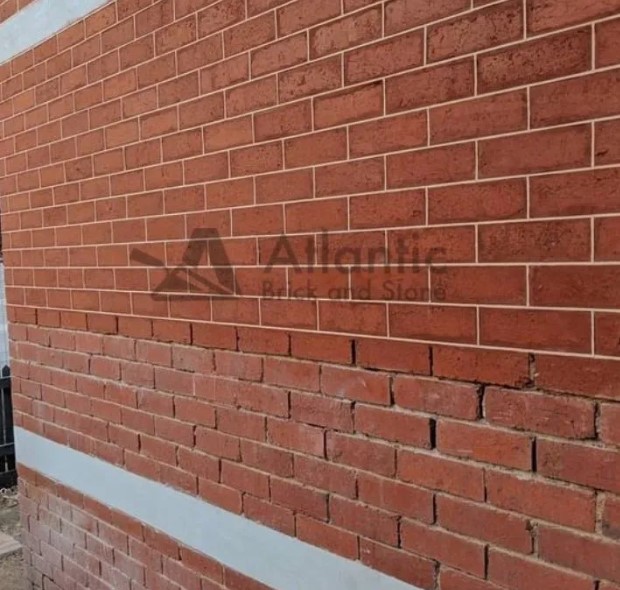As a building owner, it’s important to keep an eye out for potential issues before they become serious problems. One key maintenance task is checking for signs that your brickwork may need tuckpointing. Tuckpointing, which is the process of repairing deteriorated mortar joints between bricks, stone, or concrete blocks, helps maintain the structural integrity and aesthetic appeal of your building. Let’s look at some common signs that it may be time for a professional tuckpointing job.

Tuckpointing is the process of removing deteriorated mortar from the joints or seams between bricks, stones, or concrete blocks and replacing it with new mortar. Mortar is the material that bonds together and holds up the surrounding masonry units like bricks.
Over time, mortar can break down due to wear and tear from weathering, causing issues like cracking, loosening of materials, and increased risks of water damage.
Tuckpointing helps address mortar deterioration to prevent these issues from escalating. It’s an important maintenance procedure for brick chimneys, walls, and other masonry structures.
There are several visible signs that could indicate your building’s mortar joints require tuckpointing. Keep an eye out for the following issues.
Perhaps the most obvious sign is simply noticing that the mortar between bricks is breaking down and falling apart. Crumbling mortar can lead to gaps forming that allow water to seep in, risking damage to the bricks or stone over time if left unattended.
Spaces or gaps may appear between bricks due to missing or eroded mortar no longer adequately bonding and supporting the individual bricks or stones. This is a key sign that tuckpointing is needed to fill in these gaps.
Take note if sections of mortar in your walls have noticeably different coloring than the surrounding mortar. This is commonly a lighter color and could indicate moisture issues with that specific area. Proper tuckpointing can help resolve discolored mortar joints.
You may see a white, powdery substance accumulating on surface areas of your brickwork or mortar joints. This is efflorescence, which is caused by salt deposits left behind when water enters pores in the material and later evaporates. Its presence is a telltale sign of moisture penetration needing to be addressed.
Look for visible signs like water stains, peeling paint, or other indications of where water may be penetrating through cracks in your masonry. Seepage issues could worsen over time if damaged mortar joints allow water easy entry points. Tuckpointing helps waterproof and supports long-term protection.
Individual bricks showing cracks are a concern, as this damages the brick itself and compromises the structural integrity of the wall. Cracks may form due to brick movement from eroded mortar failing to properly hold bricks in place.
Be on alert for bricks that appear loose, are popping out of position, or have small chips falling off their surface. Each of these issues can indicate mortar is no longer firmly bonding bricks where tuckpointing repair is necessary.
Ignoring mortar deterioration signs can have serious consequences. Crumbling mortar leads to gaps allowing water damage over time from seepage and winter freezing. Loose bricks and cracks become structural issues, risking wall collapse. Efflorescence stains worsen without repair. Cosmetic and resale value issues arise. Minor repointing needs become extensive, costly repairs if not addressed early through regular mortar maintenance.
Conducting an inspection of the exterior of your home, chimney, walls, or other structures can help determine the need for tuckpointing repairs. Look closely along mortar joints between your bricks, stones, or blocks for any signs of:
Be methodical checking different areas, as some parts of a building may require spot tuckpointing while significant repointing of entire walls may be needed in other locations. It’s preferred to contact a masonry repair expert if you observe consistent signs of mortar deterioration. A professional can inspect problem areas more closely and advise the level of repair needed.
Regular maintenance of your brick walls, chimneys, and brick structures through periodic tuckpointing is important to:
For over 15 years, Atlantic Brick and Stone has been providing quality masonry repair services throughout the Fredericton area. Our masons and bricklayers have extensive experience skillfully tuckpointing buildings of all sizes, from small homes to large commercial structures.
Atlantic team uses specialized tools and methods to precisely match mortar color and texture. They are proficient at both small spot repairs and large-scale repointing projects. As a trusted name, Atlantic Brick and Stone gets your tuckpointing done right at affordable prices.
Our extensive portfolio and long list of satisfied clients is a testament to our expertise. Get in touch with us to assess your needs and get affordable quotes.
Tuckpointing is necessary if inspections find degraded mortar issues like crumbling, cracks, or gaps. Repointing stops further damage from moisture or structural compromising to support durable brickwork long-term.
We suggest inspecting walls every 5-10 years for repointing, or more often in harsh climates where freeze-thaw speeds up deterioration. Full repointing is typically needed every 20-30 years, though quality work can prolong that timeline.
Tuckpointing provides waterproofing, structure protection, prevents moisture damage, and safeguards value. The guide identifies when needed and stresses timely repairs to avoid worsening, costly issues in future.
GET STARTED
Create stunning structures with our residential and commercial masonry services in Fredericton. From meticulous designs to the completed build, our process is professional and rewarding, and we can’t wait to build your dream with you.
Atlantic Brick and Stone, one of the best masonry contractors in Fredericton, NB
Contact
8 Muskie Street, Lower Kingsclear, New Brunswick E3E 0E7, Canada